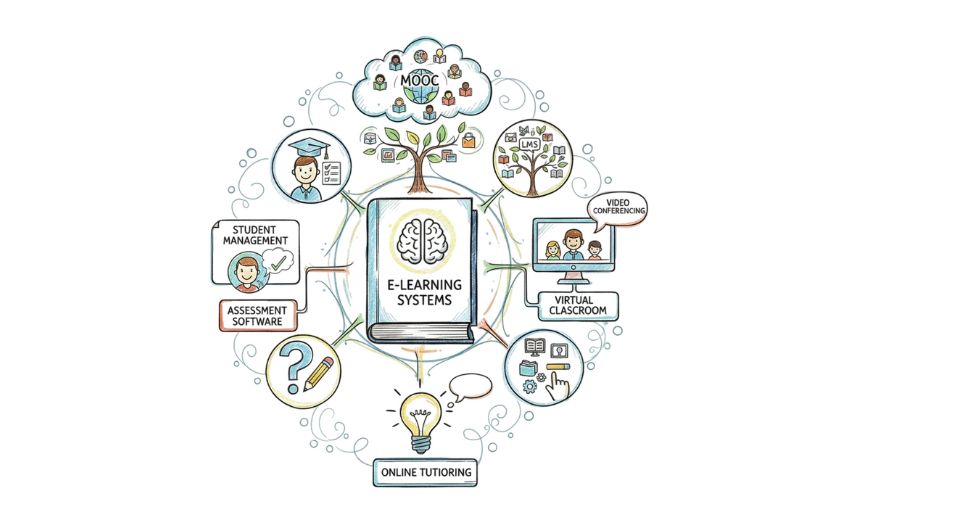MARKET OVERVIEW
The global cloud services market will go well beyond the storage and data hosting functions that initially brought it to the limelight. In the coming years, this market will be a platform for companies and individuals who will be relying on it for not only efficiency but also for completely new approaches to running operations. The revolution will not be based solely on speed and openness, but on the extent to which cloud platforms will be integrated into the operations of commerce, healthcare, education, and creative arts. The growth will not take a linear direction; it will determine how organizations will envision possibilities that were previously distant.
As technology will continue to evolve, the market will not stay limited to traditional uses. It will more and more constitute the backbone of networks that are connected with each other where businesses will not only keep data but also create smart frameworks that will learn, adjust, and change over time. Future businesses will rely on such systems for anticipating consumer demands, optimizing global logistics, and regulating operations in a manner that will seem so seamless to the end user. This path will demonstrate that cloud solutions will no longer be an intangible utility but will become a tangible driver of innovation.
The sector will not rest at addressing corporate players. It will level the playing field so that start-ups and small businesses will have an equal chance to play. The cloud platforms will be tailored to fit diverse levels of need, which will translate into even the smallest idea with a low resource base having an opportunity to scale in the international market space. This is the democratization of technology that will change the way entrepreneurship will be viewed, opening doors to new voices and markets.
One area that will extend the global cloud services market beyond conventional horizons will be its capacity to bring together disparate industries under one digital umbrella. Industries like farming, which was previously handled with little exposure to high technology, will start implementing cloud-based predictive analytics to better manage resources. Likewise, the creative industries and arts will depend on cloud systems for cooperative creation, enabling worldwide collaboration without geographical limitations. The future market will therefore not only benefit business efficiency but also cultural and social growth.
Security and trust will be at the heart of its future growth. Although data security will forever be in doubt, the systems within this market will improve with robust frameworks that will enable people and businesses to do business with confidence. These advancements will not only protect information but will create a better relationship between providers and users, emboldening the notion that technology will be an ally and not a remote service.
In summary, the global cloud services market will not only be a system of support for data management anymore. It will be an ecosystem that will shape decision-making, creativity, and development in different industries. Its growth will not only respond to current needs but will create avenues toward possibilities yet to be discovered, making its future a catalyst for change on a worldwide scale.
Global cloud services market is estimated to reach $1,987,850.65 Million by 2032; growing at a CAGR of 16.0% from 2025 to 2032.

GROWTH FACTORS
The global cloud services market is progressing step by step with the enhancement furnished by means of the growing call scalable and fee-effective IT infrastructure. Organizations are continuously challenged to cut prices without sacrificing flexibility and agility in their operations. Cloud offerings achieve this through offering on-call for availability of resources without full-size investments in bodily infrastructure. This transition has became cloud adoption into extra than an era choice; it has turn out to be an approach that agencies use to stay competitive in an accelerating virtual world. The short uptake of cloud technologies in industries like healthcare, finance, education, and retail further underscores how indispensable the cloud has come to be in contemporary enterprise operations.
Although cloud offerings offer blessings, there are big demanding situations inside the market that cannot be neglected. Data safety and privacy issues stay predominant on the timetable. With greater sensitive data being held and accessed via the cloud, breaches and unauthorized entry to threats remain excessive. Businesses are wary aware that a single security slip-up would cause heavy financial and reputational losses. Another limitation is the extensive dependence on robust network connectivity and bandwidth. Where internet infrastructure is still in its emergence stage, companies can find it difficult to make optimal use of cloud services, which hinders broader adoption.
Notwithstanding the drawbacks, the global cloud services market will keep creating opportunities. Integration of artificial intelligence and machine gaining knowledge of into cloud platforms is one of the most promising sectors. These technologies are revolutionizing the method of statistical evaluation by businesses, automating paintings, and enhancing choice-making. AI-powered cloud structures will not simply offer storage and computational capability but also sensible solutions that carry fee to industries from logistics to healthcare. This boom will open up room for innovation and more demand within destiny.
The 2d foremost opportunity comes within the form of developing attractiveness of hybrid and multi-cloud practices. Organizations no longer desire to depend upon one issuer or one form of cloud deployment. Through the combination of public, private, and on-premises structures, businesses have more management, flexibility, and dependability. This fashion is ready to grow as corporations try to reconcile performance with protection and compliance requirements. Consequently, the marketplace shall experience expanded variety in merchandise, motivating conventional carriers as well as new ones to growth their services to house moving demands.
In brief, the global cloud services market is defined by robust demand and swift uptake, restrained by certain lingering concerns, yet also full of opportunity that will fuel innovation and expansion. Although security and connectivity will continue to be challenges, the future will be defined by more intelligent platforms and adaptive deployment models that will make the cloud an even more powerful pillar of worldwide business.
MARKET SEGMENTATION
By Service Model
The global cloud services market has been receiving unprecedented hobby as organizations, governments, and customers increasingly depend on cloud-primarily based solutions for storage, operation, and innovation. Cloud has shifted from an option to a necessity because of the want for speed, flexibility, and economic efficiency. What previously seemed an alternative for legacy IT infrastructure is now the fulcrum through which groups perform and strategize for enlargement. The general movement toward digitalization has situated cloud services at the forefront of technological development, providing not only storage and processing power but also platforms and software that ease complicated processes.
The global cloud services market can be accessed more thoroughly through its service models, each of which is intended to address varying business requirements. One of the biggest segments, with a value of $187,319.31 million, is Infrastructure as a Service (IaaS). IaaS offers companies virtualized computing resources like servers, networks, and storage, which enable organizations to sidestep the exorbitant cost of constructing physical infrastructure. In addition to IaaS, Platform as a Service (PaaS) has increased to $47,548.87 million, aiding developers with frameworks and tools for building, testing, and deploying applications faster. This offering eliminates the hassle of hardware and software layer management, enabling developers to devote more time to innovation and fewer resources to infrastructure management.
Software as a Service (SaaS) still leads the debate due to its accessibility and ease of use. Ranging from productivity software programs to sophisticated commercial enterprise packages, SaaS has come to be part of ordinary lifestyles for enterprises and individuals. Function as a Service (FaaS), although smaller in size than the others, is slowly gaining prominence as agencies find out about serverless computing to reduce expenses and beautify scalability. These carrier fashions are not isolated; they work collectively, growing a network of possibilities that assist corporations adapt quickly to changing demands while making technology extra available to a broader target market.
As adoption deepens across industries, the global cloud services market will continue to make bigger its role in shaping the manner present day economy's function. Firms are now not most effective thinking about cloud as a method to store fees however also as a strategic enabler to beautify resiliency, pace, and collaboration. Cloud services will remain at the leading edge in addressing those desires with the appearance of synthetic intelligence, big data, and far-flung paintings. The integration of numerous provider fashions guarantees corporations of all sizes, ranging from startup groups to multinational companies, have solutions optimized for his or her specific needs. This steady boom is a testimony to how cloud services now not the best resource businesses but also redefine the scope of what can be carried out within the future.
By Deployment Model
The global cloud services market has emerged as one of the most critical factors of contemporary virtual enlargement, shaping the manner in which organizations store, system, and exchange information. Enterprises globally are increasingly leaving behind legacy records facilities and turning in the direction of cloud-primarily based structures which might be flexible and green. With agencies having an ever developing call fast performance and straightforward information control, cloud offerings are no longer an alternative but a necessity inside the enterprise version. This isn't always only remodeling the manner corporations feature internally however additionally how they have interaction with customers globally.
When thinking about the marketplace by using deployment version, there are three vast classes that emerge: Public Cloud, Private Cloud, and Hybrid Cloud. Public Cloud has grown to be extremely famous due to its affordability and scalability. Companies can effortlessly procure computing resources fast without having to preserve cumbersome infrastructure, which makes it an incredibly sought-after desire for small to medium corporations and startups. Private Cloud is commonly favored by huge groups or industries such as healthcare and finance, where safety and management are of paramount importance. It affords businesses with more manipulation over their statistics without leaving at the back of most of the blessings of cloud generation.
The Hybrid Cloud approach has been confirmed to be a strong center option, enabling companies to have their cake and devour it too. By bringing collectively the scalability of the general public cloud and the security of the personal cloud, agencies can take more care of touchy statistics and nevertheless revel in the ability of scaling up when necessary. This version is gaining traction as corporations recognize the fee of finding a balance between flexibility and protection. Hybrid solutions will probable be an excellent larger have an effect on the way industries embody cloud offerings within the destiny.
With the advancing era, the global cloud services market will continue to grow, opening more avenues for innovation. Organizations will keep relying on cloud answers to address information requirements, enhance patron reviews, and remain aggressive in a digital-first environment. The combination of public, non-public, and hybrid deployments will continue to form decisions, with agencies opting for the technique that works first-rate for them. One aspect that is positive is that cloud technology will preserve to stay at the middle of commercial enterprise transformation global, bringing performance and defining the destiny of virtual improvement.
By Organization Size
The global cloud services market has revolutionized the way organizations store data, run operations, and achieve digital growth. Through scalable and elastic solutions, it has emerged as a reliable platform for businesses of all sizes. Perhaps one of the most significant ways of understanding this industry is by examining how different sizes of organizations utilize cloud services. Both small and medium business and big business rely on it, but the manner in which they use it tends to mirror their own particular requirements and resources. This split emphasizes not only the extent of cloud services, but also how versatile they will remain in facilitating a broad array of business objectives.
For small and medium-sized groups (SMEs), cloud services are not simply a luxury; they are a way to survive and thrive. SMEs typically have tight budgets and may not be able to maintain great IT infrastructure costs. Cloud computing lets them have access to advanced technologies without incurring massive initial fees, as well as the ability to scale up with boom. From storage to client control systems, SMEs will continue to rely on cloud platforms to balance the sector with giants. Accessible as its far, cloud adoption is even extra appealing to emerging market organizations in which virtual growth is picking up velocity.
Large groups, in contrast, take an exceptional approach to cloud services. With huge operations across nations and various business capabilities, they regard cloud structures to streamline approaches, take care of intricacy of information streams, and beef up security controls. Big companies will continue to undertake hybrid and multi-cloud approaches, allowing them to keep managing over sensitive statistics at the same time as nonetheless experiencing cloud scalability. The circulate towards digital transformation has placed cloud adoption as not most effective a trouble of efficiency but an aggressive vital, and for these agencies, the cloud could be the foundation of global collaboration and innovation.
The global cloud services market, when observed from the perspective of organization size, depicts how technology molds to both the aspirations of start-ups and the magnitude of corporate behemoths. While SMEs welcome the cloud as a door to possibility, larger companies utilize it as a means to coordinate their sprawling operations and fuel future growth. This two-pronged view reveals that cloud use is not size-restricted but influenced instead by each organization's goals and challenges. With the growth of the market, SMEs as well as large companies will increasingly rely on cloud platforms, which will act as a common platform for digital advancement across all industries globally.
By Industry Vertical
The global cloud services market has expanded into one of the most powerful drivers of change across industries globally. Companies now are no longer restricted by cumbersome physical infrastructure, as cloud technology avails flexibility, speed, and cost savings. By industry verticals, cloud platform adoption has been varied, with each sector utilizing its attributes in manners that suit its specific requirements. From quicker data storage and processing to real-time teamwork and enhanced customer service, cloud technology has become a must-have tool that will continue to revolutionize the way organizations operate.
In the Telecom and Information Technology sector, the transition to cloud services has been swift. Firms depend on the cloud to process data-intensive applications, enable remote working, and enhance digital connectivity. Even the Banking, Financial Services and Insurance (BFSI) industry has welcomed cloud adoption as it assists in secure transactions, fraud prevention, and customer data management. Financial institutions will increasingly depend on such services to enhance speed and security and lower operational expenses.
Healthcare and Life Sciences have gained tremendously from cloud technology. The capacity for storing medical records securely, telemedicine, and health data analytics in real time has opened doors for improved patient outcomes. Likewise, sectors such as Retail and Consumer Goods are looking to cloud services for managing supply chains, understanding customer behavior, and personalizing shopping experiences. Cloud systems have been used by manufacturing companies to increase automation, drive efficiency, and manage production data more accurately.
Media and Entertainment is one of the industry verticals that has utilized cloud technology to good effect, especially for digital streaming, storage, and distribution. Government and Public Sector organizations are trusting the cloud for transparency, effective data management, and safe communication. Other sectors beyond these major categories also keep extending their dependence on cloud platforms to address current challenges. The Global Cloud Services industry, when observed through its wide-ranging verticals, showcases the way no industry stands separate from its impact, and the years that are too come will witness even more penetration of this technology within day-to-day operations.
|
Forecast Period |
2025-2032 |
|
Market Size in 2025 |
$716,163.17 million |
|
Market Size by 2032 |
$1,987,850.65 Million |
|
Growth Rate from 2025 to 2032 |
16.0% |
|
Base Year |
2024 |
|
Regions Covered |
North America, Europe, Asia-Pacific Green, South America, Middle East & Africa |
REGIONAL ANALYSIS
The global cloud services market is influenced by a broad geographic distribution, and every region has its own impact on demand, adoption, and innovation. North America is one of the strongest regions, and the U.S. is leading the charge thanks to its developed digital ecosystem and concentration of leading technology firms. Canada and Mexico are also ramping up their adoption, fueled by increased investment in digitalization and cloud-based options. Collectively, they comprise a solid foundation for cloud services overall growth in this region.
Europe remains strong with country-level growth spurred by the UK, Germany, France, and Italy. These nations are experiencing cloud service uptake at a fast pace across financial, healthcare, and manufacturing sectors. With the growing focus on data security and compliance with strict regulations, demand for localized cloud solutions is likely to increase further. Outside of the big markets, Rest of Europe also shows consistent interest, with both large corporates and smaller organizations seeing the benefit of cloud integration in ensuring competitiveness.
In the Asia-Pacific, cloud adoption is gaining momentum at an awesome charge. China, India, Japan, and South Korea are the distinguished participants, aided by means of increasing virtual economies, big populations, and generation-led growth heavily supported via authority's institutions. As groups on this vicinity shift in the direction of higher connectivity and automation and move toward smarter solutions, cloud platform usage will keep on growing. The Rest of Asia-Pacific also contributes to this increase, with developing markets slowly transitioning toward more sturdy virtual infrastructures that allow cloud adoption.
South America is likewise slowly adopting cloud technology, with Brazil and Argentina being the predominant hubs. These nations are experiencing increasing desires for scalable answers that can handle increasing enterprise necessities, specifically in industries like retail, telecom, and banking and economic services. The Rest of South America is also following, however greater slowly, because of infrastructure and funding demanding situations. Still, there is strong boom capability in this area as organizations are seeking to turn out to be more contemporary and efficient.
The Middle East & Africa offer a wonderful scene, with cloud adoption constructing momentum. GCC international locations, Egypt, and South Africa are spearheading the transition, supported via growing investments in virtual transformation and smart town initiatives. The Rest of the Middle East & Africa, although growing at a slower tempo, is properly positioned as connectivity increases and extra numbers of corporations migrate in the direction of cloud-based solutions. Collectively, those regions demonstrate that the global cloud services market is not restrained to a single location but is expanding across continents to forge a really connected future.

COMPETITIVE PLAYERS
The global cloud services market has emerged as one of the most powerful drivers of how people and businesses consume technology. From storing data to high-powered computing, cloud solutions are no longer optional but a must-have building block for growth and effectiveness. Businesses today depend on the scalability and affordability that cloud platforms offer so they can expand their operations without making large investments in physical infrastructure. This change has established a landscape in which small startups and giant corporations can compete on a level playing field, leveraging the same tools for managing data, boosting productivity, and streamlining collaboration.
As cloud-based solutions become increasingly sought after, the sector has drawn some of the most dominant forces in technology. Amazon Web Services (AWS), Microsoft Azure, and Google Cloud Platform (GCP) set the pace with large international networks and arrays of services supporting artificial intelligence programs to safe data storage. Together with these industry titans, Oracle Cloud, Salesforce, and SAP concentrate on such niche areas as business solutions, customer relations management, and business analytics. Their capacity to offer focused services means that companies can embrace cloud technology developed to suit their own requirements instead of using uniform models.
Aside from the leaders, there also appears an increasing number of other prominent providers who introduce distinct strengths to the sector. Huawei Cloud, Dell Technologies, Hewlett Packard Enterprise (HPE), and VMware provide infrastructure and hybrid solutions to assist companies in balancing nearby systems and cloud implementation. Niche competitors like Tresorit and MEGA are stressing safe garage and privateness-focused offerings, concentrated on organizations which can be eager on protective their facts. At the same time, IDrive, ServiceNow, and Tencent Cloud expand cloud services penetration into extra industries by way of masking topics consisting of workflow automation, backup, and international reach. This range of carriers illustrates how the marketplace is developing now not handiest in phrases of size but also in terms of variety in solutions being offered.
The rivalry amongst these companies will maintain to force innovation, bringing approximately faster, extra steady, and cheaper services. With extra organizations and individuals moving their operations and information to the cloud, vendors will spend money on improving user revel in, imparting greater transparency, and instilling trust through elevated security features. The global cloud services market isn't always simply changing the manner generation is utilized however also defining how corporations perform in a pace, reliability, and accessibility-based global. The co-existence of both incumbent tech giants and new innovators ensures that the marketplace will maintain to increase both in size and complexity, providing possibility for industries international.
Cloud Services Market Key Segments:
By Service Model
- Infrastructure as a Service (IaaS)
- Platform as a Service (PaaS)
- Software as a Service (SaaS)
- Function as a Service (FaaS)
By Deployment Model
- Public Cloud
- Private Cloud
- Hybrid Cloud
By Organization Size
- Small and Medium Enterprises (SMEs)
- Large Enterprise
By Industry Vertical
- Information Technology and Telecom
- Banking, Financial Services and Insurance (BFSI)
- Healthcare And Life Sciences
- Retail And Consumer Goods
- Manufacturing
- Media And Entertainment
- Government And Public Sector
- Other
Key Global Cloud Services Industry Players
- Amazon Web Services (AWS)
- Microsoft Azure
- Google Cloud Platform (GCP)
- Tresorit
- Oracle Cloud
- MEGA
- Salesforce
- SAP
- VMware
- Huawei Cloud
- Dell Technologies
- Hewlett Packard Enterprise (HPE)
- IDrive
- ServiceNow
- Tencent Cloud
WHAT REPORT PROVIDES
- Full in-depth analysis of the parent Industry
- Important changes in market and its dynamics
- Segmentation details of the market
- Former, on-going, and projected market analysis in terms of volume and value
- Assessment of niche industry developments
- Market share analysis
- Key strategies of major players
- Emerging segments and regional growth potential








 US: +1 3023308252
US: +1 3023308252






